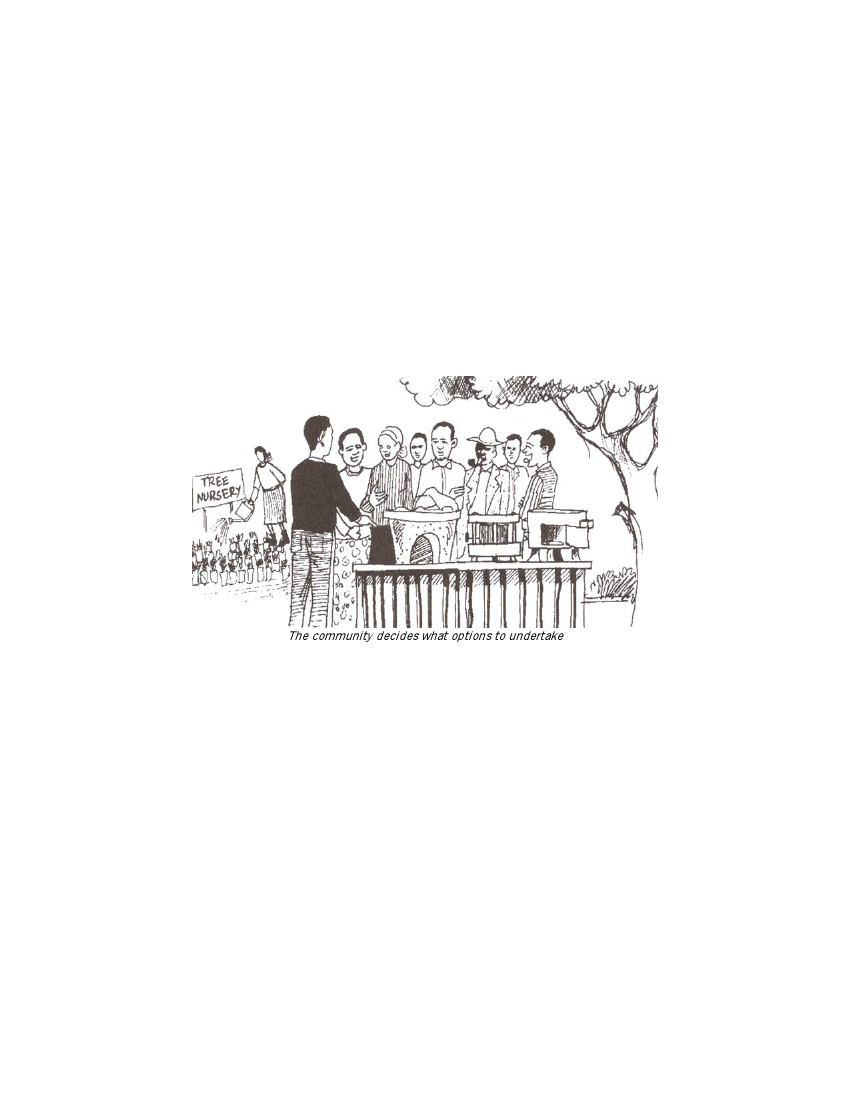
Why use participatory methodologies?
Participation in any area of development is not easy. Thos involved in development work need to learn to
change attitudes, and communities need to learn to participate in projects designed to benefit them.
Participation is usually easier with a community group where no one has worked before, because they do
not have any preconceived ideas regarding extension workers.
There are different levels of participation in which people:
• Contribute time as a tool for cheap labour, or a tool to sell a technology or idea
• Provide information to the agency or development worker
• Contribute funds
• Participate in an on-going project.
If the community decides what options to undertake, the project may take a completely different course.
They may identify problems and solutions the agency would rather ignore. The agency has to be flexible.
The community decides what options to undertake
Examples from the PEOPLE Approach
The underlying principles of participatory needs assessment in stoves and energy work take into account
that:
• Woman and men have a wealth of traditional knowledge which t hey use as coping strategies to
deal with energy problems and to appraise new options
• The role of the outsider is to learn, convene, and catalyse sharing of information among the
communities Involvement of marginal groups provides techniques for people to assess their
situation, and in the process, suggest new options.
• The aim of the PEOPLE approach is not to introduce any specific energy technology. It is to
encourage communities to better understand their energy problems, and assess ways of addressing
them and expand their choice and access to appropriate interventions.
Example 1: Using the fuel scarcity and availability trend analysis
Objectives
• To identify changes in fuel availability over time
• Too discuss fuel wood scarcity indicators
19